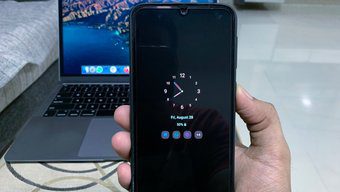ENIAC to the amazing Macbook Airs and Ultrabooks of today, they have become ubiquitous and indispensable. But the popular practice of using the keyboard and the mouse to control the computer has remained unchanged for years. Mobile phones have moved towards being smartphones and most of them no longer have a keypad. All touch controlled! Then why not evolve towards using other input methods on our computers? Why not try technologies like speech and gesture recognition? Speech Recognition in Windows is nothing new but the usage hasn’t gone mainstream. If you have stayed behind in the fear of its complexity, let me tell you that your fears are unwarranted. Speech recognition in Windows 7 is seamless and beautiful. Sure there is a learning curve but once you get used to it, it has the potential to speed up a big part of your daily work on the PC. There are three parts to setting up text to speech functionality in total. Let us guide you through.
Getting Started With Speech Recognition in Windows 7
Step 1: Start Windows Speech recognition. Launch the start menu, type speech recognition and hit enter. Step 2: You will see a welcome note giving you a brief description of the entire application and its capabilities. Hit Next.
Set Up Microphone
The quality of the microphone will determine the efficiency and sound recording of your speech recognition engine. Step 3: Next, you will need to choose the mode of input. I personally prefer and recommend the use of Headset Microphone. It is the most effective and efficient one. Step 4: The next window will give you tips on the usage and placement of microphone. After going to the next window you will need to dictate a sentence for further setup. Do this carefully and in a silent environment. Step 5: If the test passes, all is good. If not, you might want to replace the headset or adjust its placement. If problems persist you might want to check Sound settings by going to the Control Panel.
Basic Configuration
As per your convenience you might want to apply few checks on the behavior of the recognition engine. Step 6: Once the microphone is good you may start learning basic commands. Before that have the option document review enabled. This way your speech engine will continuously learn the type of words you use. Step 7: Next, choose an activation mode. I prefer using manual mode. Read text on the image below to understand each mode better. Step 8: From the next window you should navigate towards the commands reference card. I suggest you to have a printed copy. You may take it later from Control Panel > Speech Recognition > Open the Speech Reference Card as well. Note: Back after learning few basic commands you may choose to Run Speech recognition at Startup. If you plan to use it quite often have the option checked in combination with Manual Activation Mode.
Learn and Teach
Before starting to use the application it is better to learn to speak to the computer and train it to understand you. Step 9: Do not skip the tutorial. It is a fundamental to using the tool. You may take it later from Control Panel > Speech Recognition > Take Speech Tutorial as well. Step 10: During the process you will be shown the Audio Meter. It is important to understand the on/off controls and meter readings. Step 11: When you reach the dictate section, you will actually start talking to your computer. It will be real fun to learn and teach through the instructions. The Wordpad example is a must. Step 12: This will bring the setup to completion. However, you should take one more training by going to Control Panel > Speech Recognition > Train you computer to better understand you. When it is running on the System Tray you may right-click on its icon to launch a quick menu. Until you are completely familiar with the commands you might need this.
Conclusion
You shall be amazed to learn that I did not write this article. I spoke it out to my computer. However, I had to proofread and correct a few mistakes. I also had to spend some time in reformatting the data. But then I was ok with it because it saved me a lot of time and I had fun while I did it. If you are on a Windows 7 PC, do take some time out to follow this tutorial and set up speech recognition. Use it for a while and let us know how it worked for you in the comments. We are anxious to learn how you put it to use. The above article may contain affiliate links which help support Guiding Tech. However, it does not affect our editorial integrity. The content remains unbiased and authentic.




















